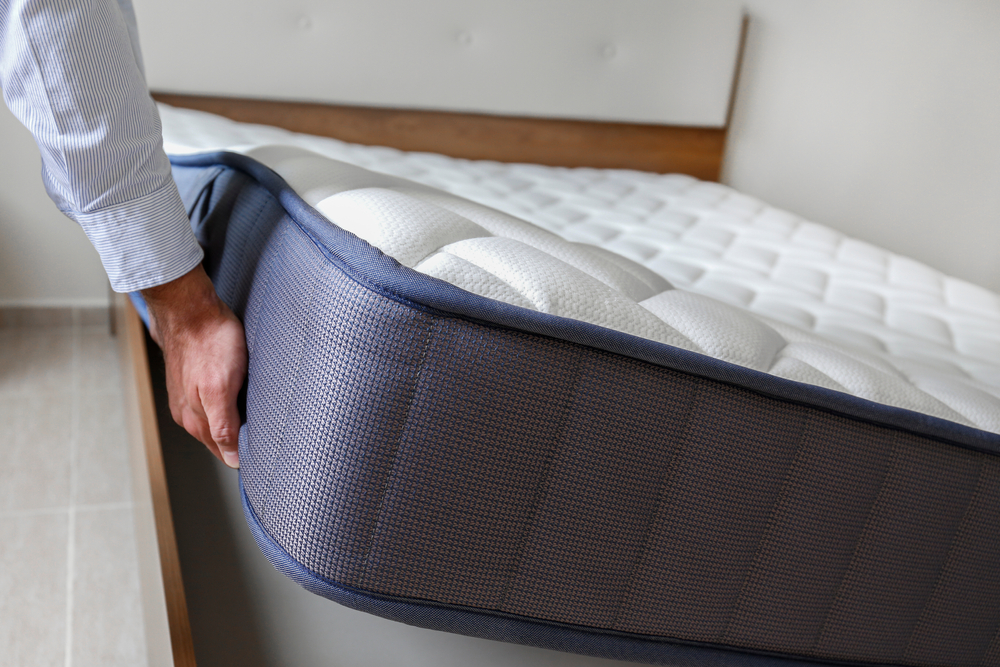Low-maintenance textiles and finishes for a cleaner sleeping zone
Choosing low-maintenance textiles and finishes reduces cleaning time, limits allergens, and helps preserve bedding and furniture. Thoughtful choices for fabrics, finishes, and storage support healthier sleep and simpler upkeep without sacrificing comfort or style.

A cleaner sleeping zone starts with materials that tolerate real life: spills, body oils, dust, and regular use. Low-maintenance textiles and finishes can lower cleaning frequency, limit allergen buildup, and extend the life of mattress covers, upholstery, and window treatments. This article outlines fabric types, surface finishes, and practical routines that balance hygiene with comfort, and ties those choices to room systems such as lighting, storage, acoustics, and ventilation.
Sleep: fabrics that support rest
Choose fabrics that are breathable, hypoallergenic where possible, and easy to launder to promote restorative sleep. Natural fibers like cotton and linen wick moisture and dry quickly, reducing the conditions that encourage dust mites. Performance blends and tightly woven microfibers resist stains and can be washed frequently at moderate temperatures. Look for removable covers with zippers on pillows and mattress protectors so items that contact skin can be cleaned without full replacement. Prioritizing simple care helps maintain a fresher sleep surface and reduces nighttime irritation.
Lighting: finishes that resist wear
Lighting choices influence both cleanliness and perceived upkeep. Matte or low-sheen paints and finishes tend to hide small scuffs and dust better than high-gloss surfaces, reducing the need for frequent touch-ups. For fixtures, favor metal or coated finishes that tolerate gentle wiping over porous materials that trap grime. Also consider bulb and fixture placement to reduce direct heat on textiles: excessive heat can accelerate fabric wear. Easy-to-clean lamp shades and washable switch plates help keep lighted areas tidy with minimal effort.
Storage and organization for textiles
Effective storage and organization reduce clutter and simplify cleaning. Use breathable storage for off-season bedding—cotton bags or bins with vents—to prevent moisture buildup. Shelving with labeled baskets keeps frequently used throws and cushions accessible but contained, preventing textile piles that collect dust. Implement rotation for frequently used linens so all items are laundered evenly and wear is distributed. Built-in storage with smooth, wipeable surfaces minimizes dust collection and supports a decluttering routine that keeps fabrics fresher overall.
Mattress and textiles: layering for hygiene
A layered approach makes mattress care straightforward. A washable mattress protector, a removable and machine-washable topper, and fitted sheets that are easy to remove reduce barriers to regular laundering. Select protectors with a balance of breathability and liquid resistance to protect internal mattress materials without trapping heat. For pillows and duvets, removable covers that accept home washing extend service life and cut down on professional cleaning needs. These strategies support mattress hygiene while keeping maintenance tasks manageable.
Acoustics and ventilation-friendly finishes
Textiles contribute to acoustics but should not impede ventilation. Acoustic panels wrapped in durable, washable fabric combine sound absorption with cleanability in rooms where noise control is important. For window treatments, consider washable curtains or blinds with sealed surfaces that can be wiped; heavy, fixed drapery that can’t be laundered easily will trap dust. Ensure finishes and fabrics do not block vents or airflow; good ventilation reduces humidity and the risk of mildew on textiles, which in turn lowers cleaning challenges and preserves fabric integrity.
Temperature, color, furniture and decluttering
Choose textiles and furniture finishes that match your climate and cleaning habits. Light colors can show staining sooner but reflect heat; darker shades hide minor marks but can trap heat. For warmer climates, breathable fabrics and finishes that stay cool to the touch improve comfort and reduce laundering caused by sweat. Furniture with removable, washable covers or smooth, sealed upholstery is simpler to maintain than deeply textured or fixed fabrics. Regular decluttering—storing or removing seldom-used items—reduces surfaces where dust accumulates and simplifies routine cleaning.
A maintenance-focused bedroom balances material selection, practical finishes, and organized systems. Opting for breathable, washable textiles, finishes that tolerate wiping, and storage that prevents clutter cuts cleaning time and supports a more hygienic sleep space. Combined with adequate ventilation, sensible lighting choices, and simple organization habits, these selections help sustain a cleaner sleeping environment without sacrificing comfort or style.





